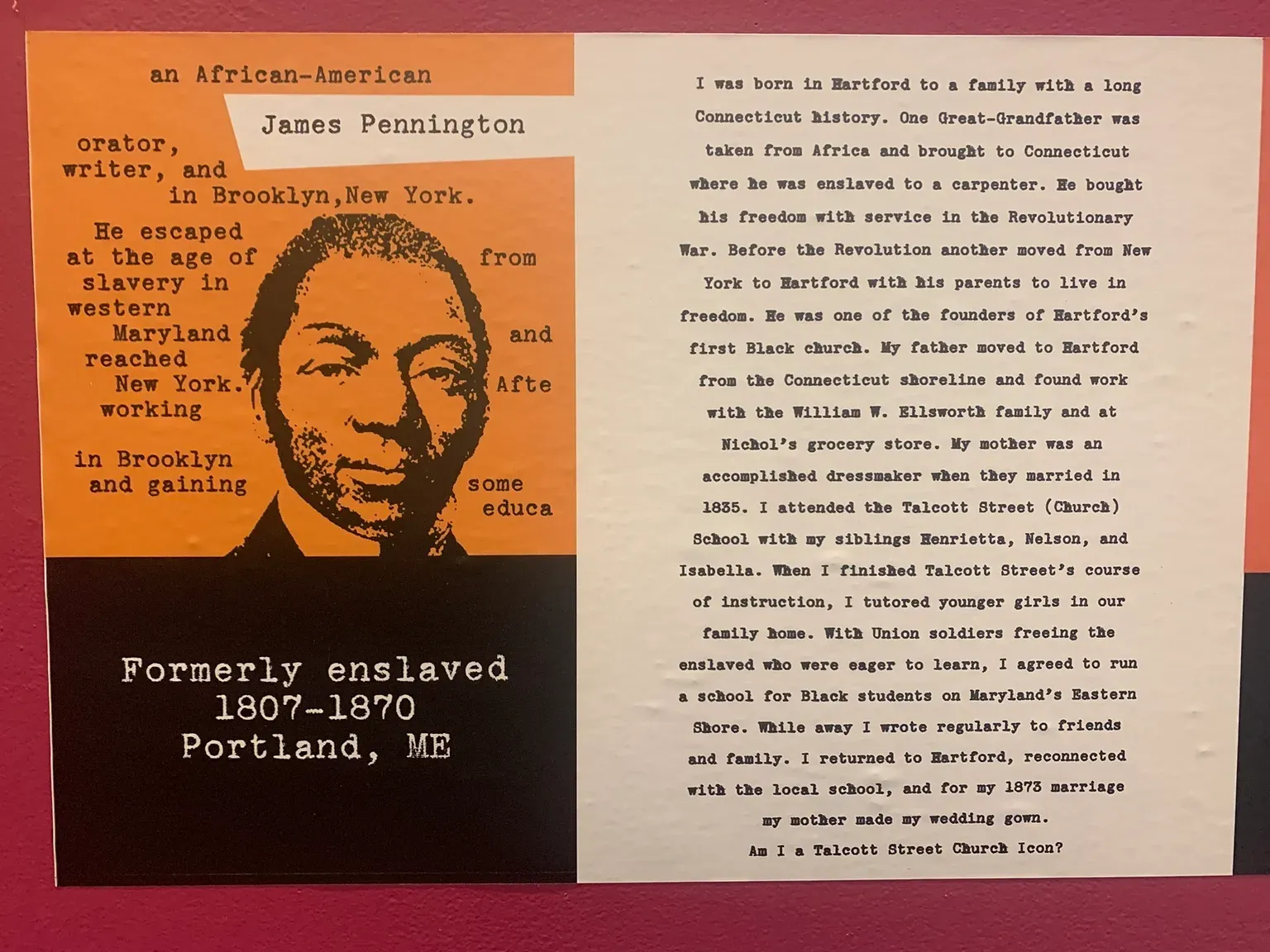The Nutmeg Pulpit: Hartford’s Talcott Street Church and Black Community Formation
Mallett Art Gallery
CT State Capital
Hartford
September 25, 2024
The Nutmeg Pulpit is a celebration of the history of Black churches in post-Revolutionary War Connecticut: Varick AME Zion and Temple Street Church in New Haven, Cross Street AME Zion Church in Middletown, but especially Talcott Street Church, the first Black church in Hartford.

The exhibit is a beautiful display of the impact of some of Talcott Street’s most famous members, highlighted in bright orange and magenta hues. It’s also primarily text based, taking quotes from members and other Black Connecticut residents to show visitors, in their own words, what it was like to be Black in the Nutmeg state in the early 19th century.
The Nutmeg Pulpit asks a pointed question: who and what should be monumental?
When one looks around Hartford, there are monuments and statues to numerous figures of the American Revolution and Colonial era, but few, if any, of those monuments represent Black or indigenous people.

“As a founding colony, a beneficiary of land dispossession, and of slavery, Connecticut’s history with African and Indigenous people is long, complicated and not acknowledged in the state’s public monuments,” one of the panels in the exhibit declares.
Slavery persisted in Connecticut for a shockingly long period due to the practice of gradual abolition. Bn fact, by the time the Civil War began in 1861, slavery had only been completely abolished in the state for 13 years. Well before that date, Connecticut legalized second-class status for Black citizens, free and enslaved, with a constitution in 1818 that reserved the right to vote for white men.

Our ancestors started their own churches because it was one of the few places where they could be treated like full human beings. Building Talcott Street was not simply an act of worship, but the creation of an entirely parallel social structure and culture for Black people.
By focusing on the creation of Black community and autonomy through the church, The Nutmeg Pulpititself is taking an alternative route towards immortalizing that history. No, we don’t get statues. But we do have this gallery, and the words of the people who came before us, just as immortal as any weather-beaten statue of Nathan Hale or Israel Putnam.
And there’s so much still for someone like me to learn. One of the most humbling experiences of the exhibit was a simple matching game that asked visitors to match brief biographies of iconic church members with pictures of them. I was ashamed to find that I knew only one person who was featured.

There are a lot of “known unknowns” when it comes to the history of Black people in Connecticut, but that still makes it a daunting task to even know where to begin looking for hidden history. The Nutmeg Pulpit gives me an idea of where to start. The exhibit also features a quite extraordinary 3D virtual tourfor those who may be unable to make the trek to State Capitol. But if you can, go experience it in person.
NEXTThe Mallett Art Gallery is open Monday-Friday, 8 a.m.-8 p.m. and Saturdays from 8 a.m. to 1:30 p.m.
Jamil goes to learn more about the aftermath of Hurricane Maria.






